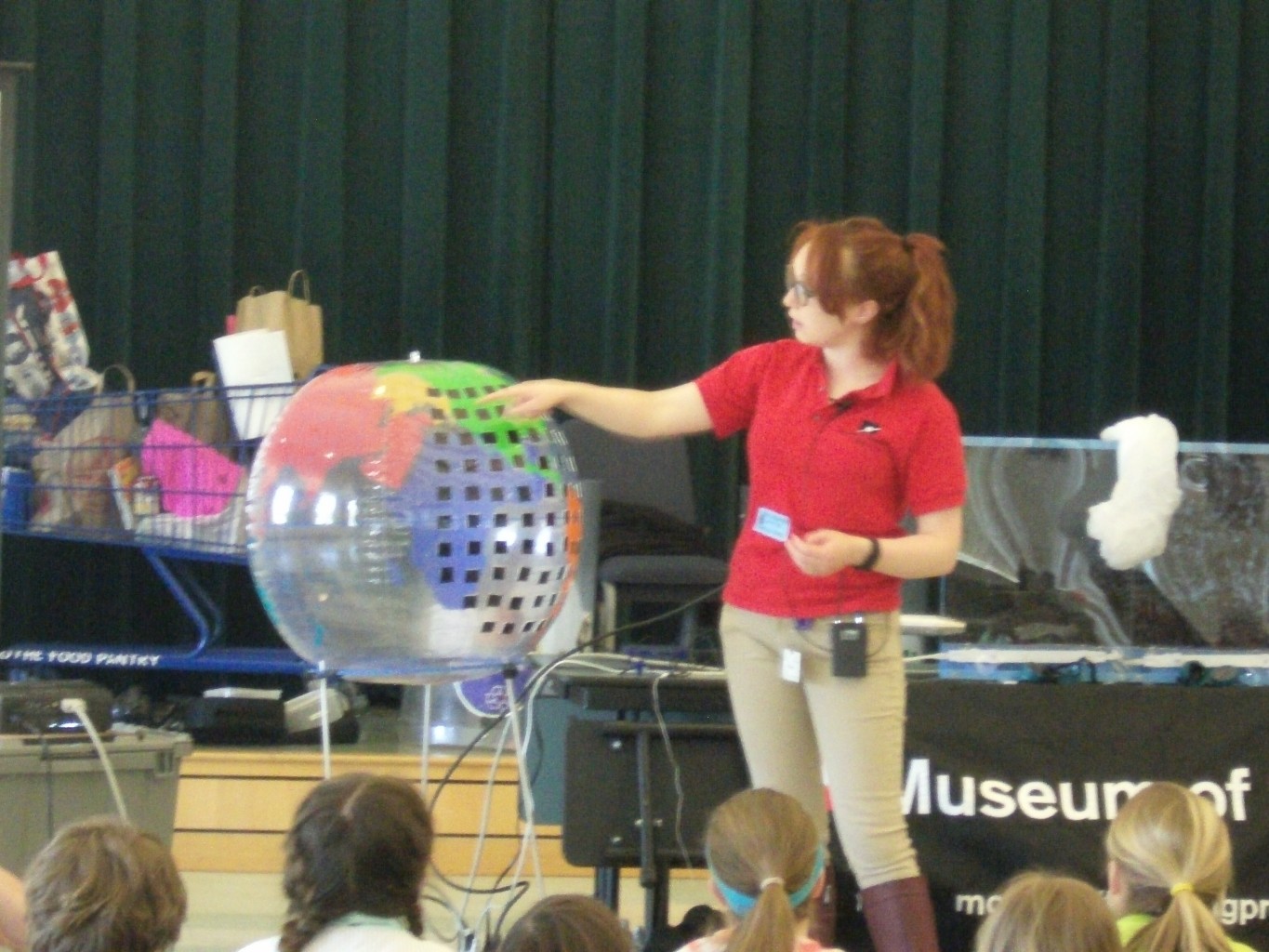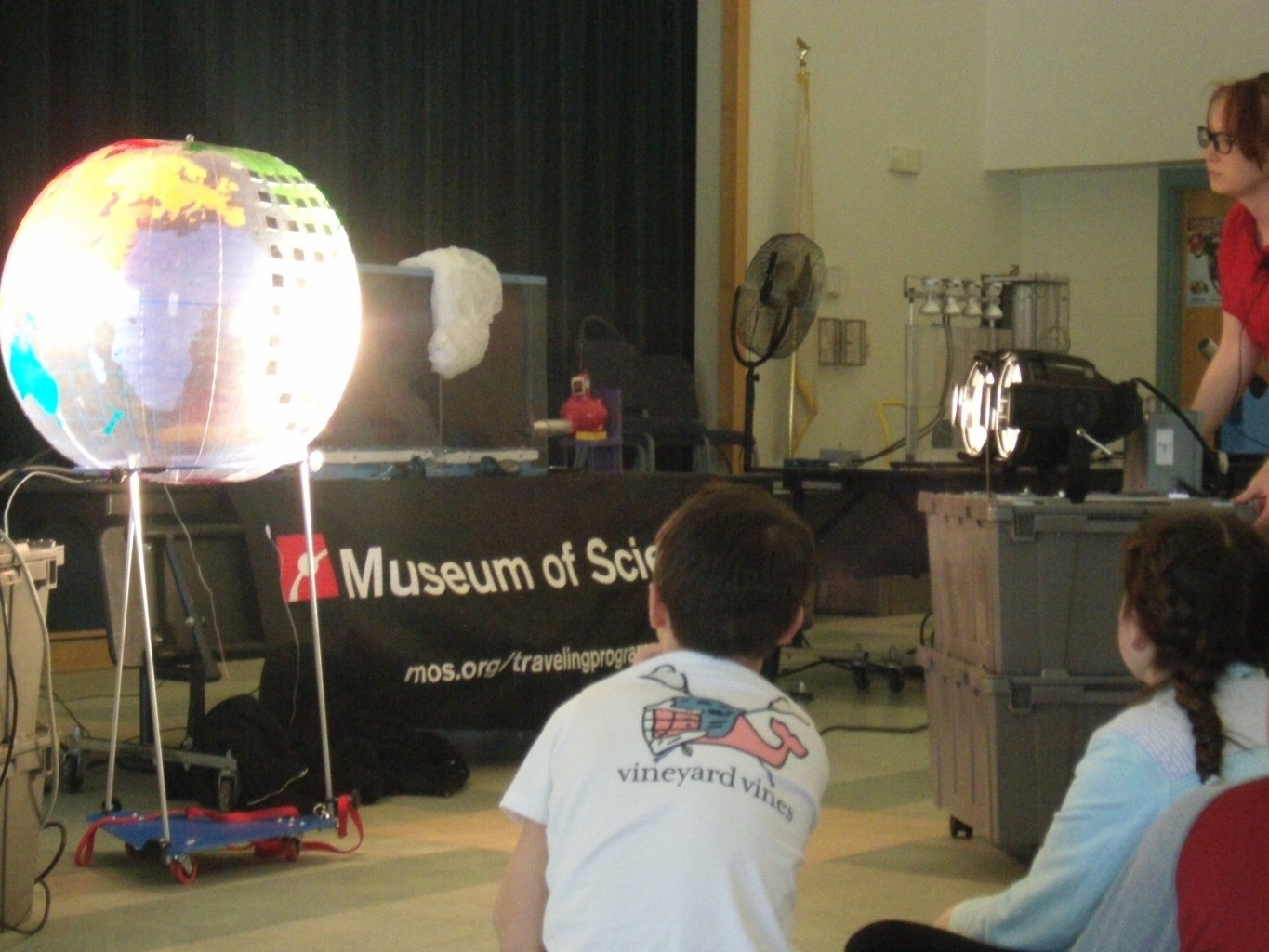Do you know how strong air pressure can be? Well, it can shoot a wooden disk across the room by an air cannon powered entirely with four bicycle pumps! On April 13, the entire fifth grade gathered in the cafeteria to watch as a cloud was formed in an air tank, an air cannon exploded, and two students got roasted by a heating lamp. The Boston Museum of Science had come to Chickering School to give us an exciting presentation on Weather!
It is amazing that you can do so much with air pressure! Casey came to our school with her tools from the Museum of Science to blow our minds. The star of the show was when Casey used a cannon to shoot a wooden puck across the room. The four lucky volunteers, or should I say workers, were Ava H., Jagger, Kelsey, and Kofi. They each got a bicycle pump,
and worked together to blow the cannon. After a minute or so the loud blast surprised everyone. Following the experiment, she explained the science behind it. When all the participants pumped the pumps, it pressurized the air. When there was no more space left in the chamber, the puck flew across the room.
One exciting demonstration was experimenting on the subject of albedo, which is the amount of the Sun’s energy that is reflected off Earth and back into space. The two students who had been chosen to be volunteers were asked to put thick, black fleece coats and safety goggles on. Then, theater lamps were switched on in front of them. The participants were hooked up to a thermometer which showed both of their temperatures and also a graph of their thermal readings. Then Casey explained how light is absorbed more by black than by white, which was why the volunteers’ temperatures were steadily getting higher. Suddenly, though, Casey draped a white smock over one student and the audience noted how his temperature stopped increasing and stayed the same, while the other pupil’s temperature kept going higher on the chart. It was noted that white reflects the light and black absorbs it, which is mostly why many people wear light, rather than dark, colors in the summer.
One of them most interesting activities, however, was when Casey heated up, in separate tubes, water and dirt. Then she wired them so that the temperature was shown, on the projector, of the water and dirt. As the temperatures rose, the spectators noticed that the dirt warmed up faster than the water. Suddenly, Casey turned the heater off. The temperatures suddenly dropped, but the water decreased much slower than the dirt. Casey explained to us that the result of the experiment was that water heats up and cools down much slower than land does. She made it clear that since land has more closely packed molecules than liquid, it warms and cools faster than water.
After this experiment, Casey explained to us the water cycle. The first stage was evaporation, which is when the water changes into water vapor as a result of the Sun’s energy. Then, condensation takes place, which is when a bunch of water vapor gathers and turns back into water droplets. Next, when the cloud gets too heavy, the water droplets fall down onto the Earth as precipitation. Finally, water/groundwater collection is when the water is collected back into another body of water.
One of the last experiments Casey performed was a cloud in a tank! She took a spray bottle of water, sprayed in the tank with it to simulate the evaporation in a tank, lit a match and put it in the tank for the smoke, closed the tank and pressurized the tank with an electronic fan and opened the top to let out the fluffy creation. Next, she had a big, blow-up earth
and used a special heating light to simulate the seasons with thermal patches on the globe that changed colors.
In all, we believe that this was a great learning experience for all the students and staff. Casey’s thorough explanations and presentation were clear and informative and every experiment left us astonished. From heat to the water cycle, we are now prepared for every weather-related thing blown our way!
Reported by: Abby, Anissa, and Charlie T.


